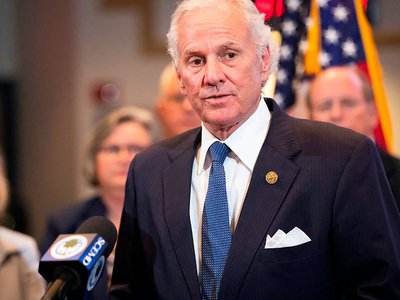Without a doubt, the past 15 months have been nasty and brutish. Hundreds of thousands of Americans have died of COVID-19, many more have lost their jobs due to the pandemic, and we all feel some level of PTSD as we emerge from this long, dark tunnel.
And yet, we do emerge. In Utah, we rise with a sober acknowledgement for what we’ve lost, but profound gratitude for what we’ve learned.
Shortly after I took the Oath of Office in January, we convened dozens of stakeholders involved in our state’s COVID-19 response. Only 305 Utahns had been fully vaccinated and we knew we needed to rapidly accelerate that effort if we were to defeat this insidious virus. We enlisted our local health departments to take a central role in setting up mass vaccination sites throughout the state. We appealed to our federal pharmacy partners to share data more rapidly and relinquish the scarce doses that they couldn’t use fast enough. We consulted with our public health experts to shift our vaccine eligibility from occupations to age, prioritizing vaccines for those who the data showed were most at risk.
As vaccines have become more plentiful, we’ve seen the numbers of vaccinations climb and the numbers of infections, hospitalizations and deaths decline. We learned a coordinated, community-minded effort works.
We also fought to keep our kids in school. Thanks to an aggressive testing effort, a mask requirement for students and teachers, and strict quarantine guidelines, all but one public school district in Utah maintained an in-class option since last August. As a result, most Utah children and teachers have been able to stay in the classroom, learning together and participating in sports and other afterschool activities. Utah’s “Test to Stay” and “Test to Play” guidelines have gained national attention, but most importantly, benefited our children.
On the economic front, we chose to keep Utah open for business by launching a “Stay Safe to Stay Open” campaign with the Salt Lake Chamber. We also continued the statewide mask mandate issued by my predecessor, Gov. Gary Herbert, in November 2020 until April 2021. Protesters picketed the Utah State Capitol and our homes, but the data showed that the mask requirement increased economic activity, allowing customers to be and feel safe and many brick-and-mortar businesses to keep operating. The results speak for themselves: Utah’s unemployment rate is the lowest in the nation at 2.7%, with construction, retail sales, and many other parts of the economy booming.
To be sure, those in Utah’s arts and the gig economy have suffered deep losses and are still in recovery. But as a state, we stand ready to assist all those still in need, particularly with better job training programs, like “SkillUpUtah,” that help displaced workers gain new skills and pivot to industries in need of workers. We learned that we can do hard things together.
While Utah has fared better than many other states, COVID-19 laid bare significant gaps in our healthcare system. While 55.6% of White adults have gotten at least one shot, just 28.9% of Pacific Islanders and 43% of Hispanics have been vaccinated so far. This is yet another indicator that other factors — where you live, family income, and your level of education — affect access to health care and health outcomes. As an administration, we’re committed to doing a better job pinpointing these social determinants of health and, with the help of private sector partners, developing a statewide equity plan to address health disparities.
As Utah rises from the pandemic wiser and stronger than before, I am deeply grateful for Utah’s people and institutions. Credit goes to our courageous health care workers, remarkable private sector efforts, and the charity and civic-minded attitude of Utahns.
It’s been said that something good comes out of every crisis and while there have been plenty of hardships these past 15 months, the pandemic reinforced for me Thomas Jefferson’s deep wisdom: that government closest to the people serves the people best. Here in Utah, we’re committed to proving that every day.







